The history begins by gathering general information, such as the individual’s name, sex, age, date of birth, occupation, and activity in which the individual was participating when the injury occurred. This is done by an athletic trainer, clinician or any member of the sports medicine team who has undergone first aid and CPR training. Notes regarding body size, body type, and general physical condition also are appropriate. Although information provided by the individual is subjective, it should still be gathered and recorded as quantitatively as possible. This can be accomplished by recording a number correlating with the described symptoms. In using such measures, the progress of the injury can be determined. If the individual reports that pain begins immediately after activity and lasts for 3 or 4 hours, a baseline of information has been established. As the individual undergoes treatment and rehabilitation for the injury, a comparison with the baseline information can determine if the condition is getting better, worse, or remains the same.
Although the intent of taking a history is to narrow the possibilities of conditions causing the injury, the history should always be taken with an open mind. If too few factors are considered, the athletic trainer or first aider may reach premature conclusions and fail to adequately address the severity of the injury. It is essential to document in writing the information obtained during the history. Find the nearest first aid and CPR course locations near you now.
The following primary components should be included in the athlete’s medical record. First is history of injuries, illnesses, new medications or allergies, pregnancies, and operations, whether sustained during the competitive season or off-season. Second is referrals for and feedback from consultation, treatment, or rehabilitation with subsequent care and clearances. Third is comprehensive entry-year health-status questionnaires and an updated health-status questionnaire each year thereafter, including information on: illnesses suffered (acute and chronic); athletic and nonathletic hospitalization; surgery, allergies, including hypersensitivity to drugs, foods, and insect bites/stings; medications taken on a regular basis; conditioning status; musculoskeletal injuries (previous and current); cerebral concussions or episodes involving loss of consciousness; syncope or near-syncope with exercise; exercise-induced asthma or bronchospasm; loss of paired organs; heat-related illness; cardiac conditions and family history of cardiac disease, including sudden death in a family member younger than 50 years and Marfan’s syndrome; menstrual history; and exposure to tuberculosis. Fourth is immunization records, including: measles, mumps, rubella (MMR); hepatitis B; diphtheria, tetanus, and boosters when appropriate; and meningitis. And lastly, the fifth is written permission signed by the student-athlete, or by the parent if the athlete is younger than 18 years, that authorizes the release of medical information to others, specifically what information may be released and to whom.
Watch this related video about UPMC Sports Medicine Young Athlete Program
A skilled interviewer must consider other issues that may impact the effectiveness of history taking. The client’s education and socioeconomic status may affect his or her vocabulary, self-expression, ability to comprehend, and ability to conceptualize questions asked by the interviewer. These individuals also may present with some anxiety if they perceive that the examiner is dismissing the magnitude of their complaints or becoming impatient with the length of time that patients take to answer a question. A skilled examiner takes note of the patient’s comfort level by recognizing not only verbal expression but also any emotion behind the expression, such as hidden fears, beliefs, or expectations. Patience, respect, rapport, structure, and reflecting on important information are all useful in conducting a comprehensive medical history.
Lesser JM, Hughes SV, Jemelka JR, Kumar S. Compiling a complete medical history: challenges and strategies for taking a comprehensive history in the elderly. Geriatrics, 2005; 60 (11) : 22–25.
